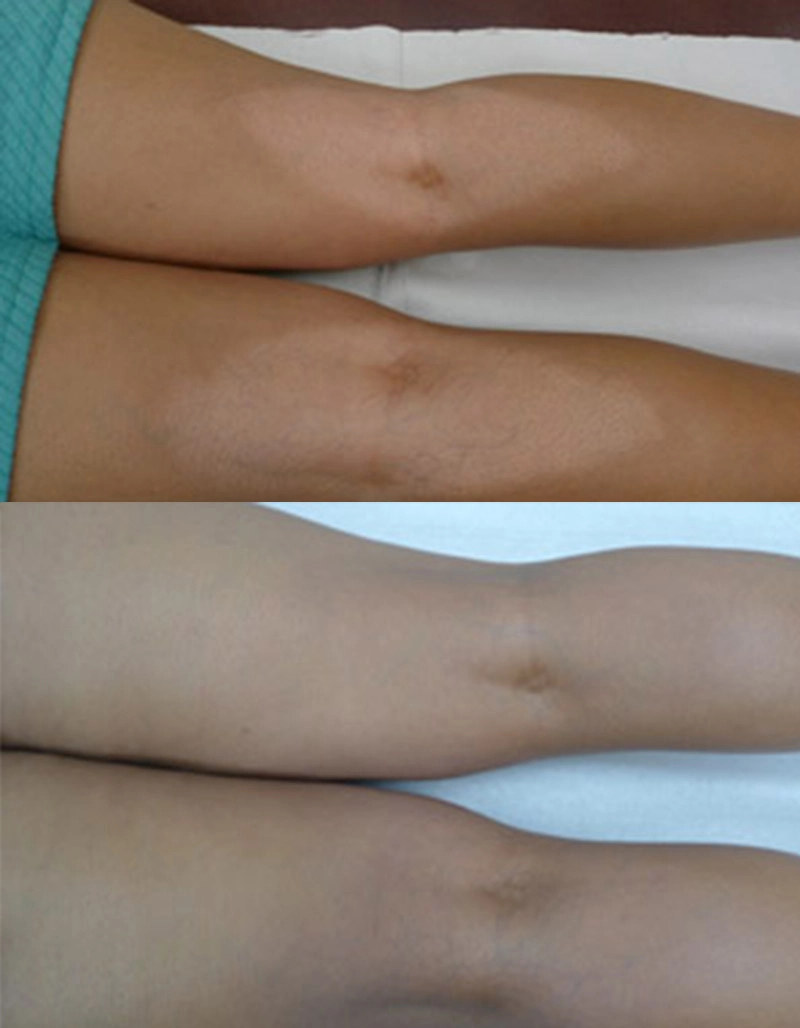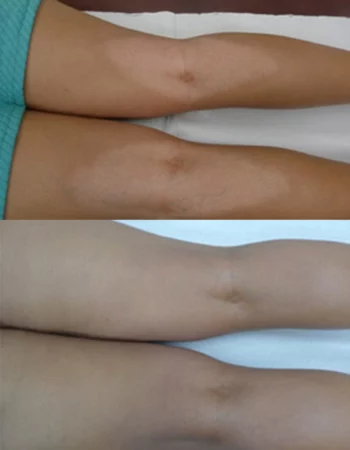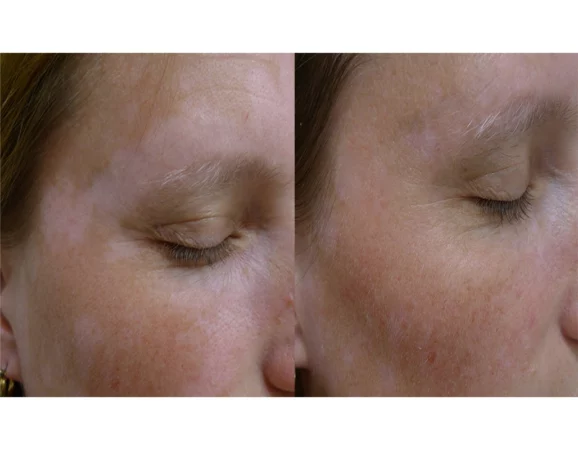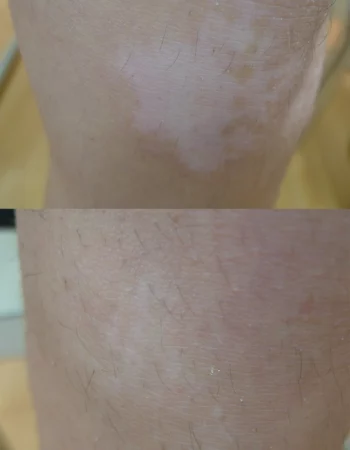Phototherapy is one of the key elements in successfully treating vitiligo. This treatment harnesses the power of light to stop inflammation in the skin & to awaken pigment cells. Treatments are safe, effective & are covered under Medicare.
Key Points
- Vitiligo is characterized by inflammation & a lack of pigment cells
- Phototherapy naturally reduces inflammation
- Light also stimulates migration & activity of pigment producing cells
- Treatments are painless & takes 2 to 3 minutes to perform
- Medically prescribed light is covered under Medicare
Vtiligo Phototherapy at a glance
Our results speak for themselves

Before
After

Pigment stimulators & phototherapy
Ask us more about this treatmant
Preferred Consultation

Before
After

Pigment stimulators & phototherapy
Ask us more about this treatmant
Preferred Consultation

Before
After

Pigment stimulators & phototherapy
Ask us more about this treatmant
Preferred Consultation
FAQs
What is phototherapy?
Phototherapy or light therapy delivers a precise, calibrated dose of UV light in a photobooth. The procedure is done in the clinic & is supervised by dermatologists. It is considered as a medical treatment under Medicare.
How does it work?
Light therapy:
- Suppresses skin inflammation, preventing further destruction of pigment producing cells.
- Awakens remaining cells to migrate to the areas of vitiligo and to produce more pigment.
Results can be seen within a few weeks. Most patients undergo a series of 20 sessions before review.
How is narrowband phototherapy different from a tanning bed?
Light produced by sunbeds can even be harmful. Tanning salon beds have a mixture of UVB, UVA & visible light. UVA & broad band UVB can lead to cancer & accelerates photoaging. These devices are not calibrated; hence the doses are unknown.
Narrowband uses only one filtered wavelength & delivers this in calibrated doses.
How is natural sunlight different from narrowband phototherapy?
It can be hard to control how much sunlight you receive as it varies with the time of day, cloud cover & sessions. Natural sunlight also has UVA & visible light; hence you will be getting exposure to the cancer inducing wavelengths of light.
Narrowband phototherapy delivers the same amount of 311 UVB spectrum in one minute as compared to 30-40 minutes of exposure, without the dangers of other wavelengths.
What is the cost of phototherapy?
Medicare card holders are bulk billed with no out of pocket expenses.
If you are not insured, the clinic will subsidise your treatment by $18.This equates to $34 for each treatment. It is encouraged to check with your overseas insurance if you are covered for phototherapy.
Products

O Cosmedics cleansing range
$63.00-$64.00

O Biotics 3D Hyaluronic Serum
From $97.00
Narrowband phototherapy is a natural, safe & effective method of re-pigmentation. Treatments take less than three minutes & are fully covered under Medicare.
What are factors to consider before undertaking phototherapy?
Factors to consider before starting on narrowband UVB include-
- Photosensitive medications you may be taking
- How sensitive you are to light
- Skin type or skin colour
- Your risk of developing skin cancer, including family or personal history of melanoma
- Previous phototherapy sessions
- The logistics of this treatment (ideally 2- 4 times a week)
Who cannot have phototherapy?
This treatment is excluded if you
- Have a personal or family history of melanoma & or multiple dysplastic moles/
- Have porphyria. We can harden up most other light sensitive disorders.
- Children who are not yet ready to stand in a phototherapy room for 2 to 3 minutes.
- Have panic attacks being in a small enclosure for a minute or two.
Your dermatologist will consider your lifetime exposure number as this depends on your skin type.
What are helpful pointers if you are undertaking narrowband phototherapy?
This will be covered by your treating dermatologist.
- Clothing style. Wear the same style of clothing. This prevents burning.
- Protect your face if these areas are not affected. This will reduce colour contrast & reduce photodamage.
- Frequency. A good interval is every second day. We are open on Saturdays.
- Dose reduction if you skip more than one week since your last session. This will prevent burns.
- Moisturise. Using a moisturizer a few minutes prior to your session improves light transmission & optimises treatment outcomes.
What are the side effects of phototherapy?
Side effects are rare & can be avoided.
- Phototherapy burn. Usually mild & will settle quickly. Occurs if you expose new areas to light or take an extended period off from phototherapy. The most common cause is a change of clothing.
- Itchy dry skin may occur early during treatment. Will settle with moisturisers.
- Melasma flare ups can be seen, but covering the face reduces pigmentation.
- Cold sores are rare but have been reported in the literature.
- PMLE or light eruption can occur, but skin hardens over time.
How is medical narrowband phototherapy different from home phototherapy?
Power & precision. Our units at Cutis Dermatology are state of the art. They provide accurate power delivery in a short treatment cycle of a few minutes. Home units are not calibrated & typically taking 10-20 times longer than in clinic systems.
You can buy intermediate level home units from overseas; however they are not TGA approved. These devices cost between 5 to 10 thousand dollars.


